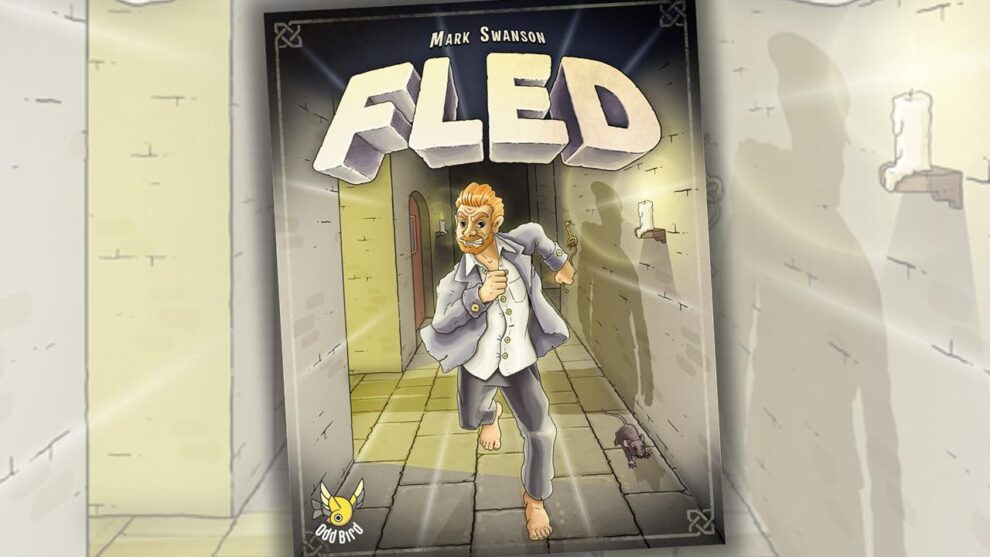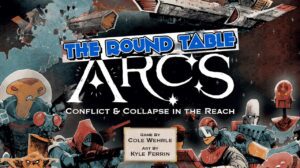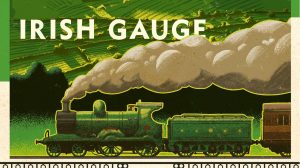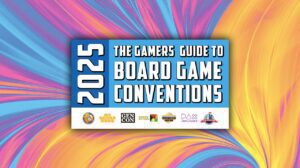Game design is hard; one of the reasons it is rip-your-eyes out difficult is because people often don’t seem to be sure what games are. Some people think they’re products, and that you can somehow commodify fun. Some people are spiritual and believe in games having magic powers to stimulate collective imagination. For me, games are about the problem of winning—what do we have to do to win, what do we have to sacrifice, what social contract do we form so we can compete for the win, what the hell does winning even mean—I could go on forever.
It’s tough, is what I’m saying.
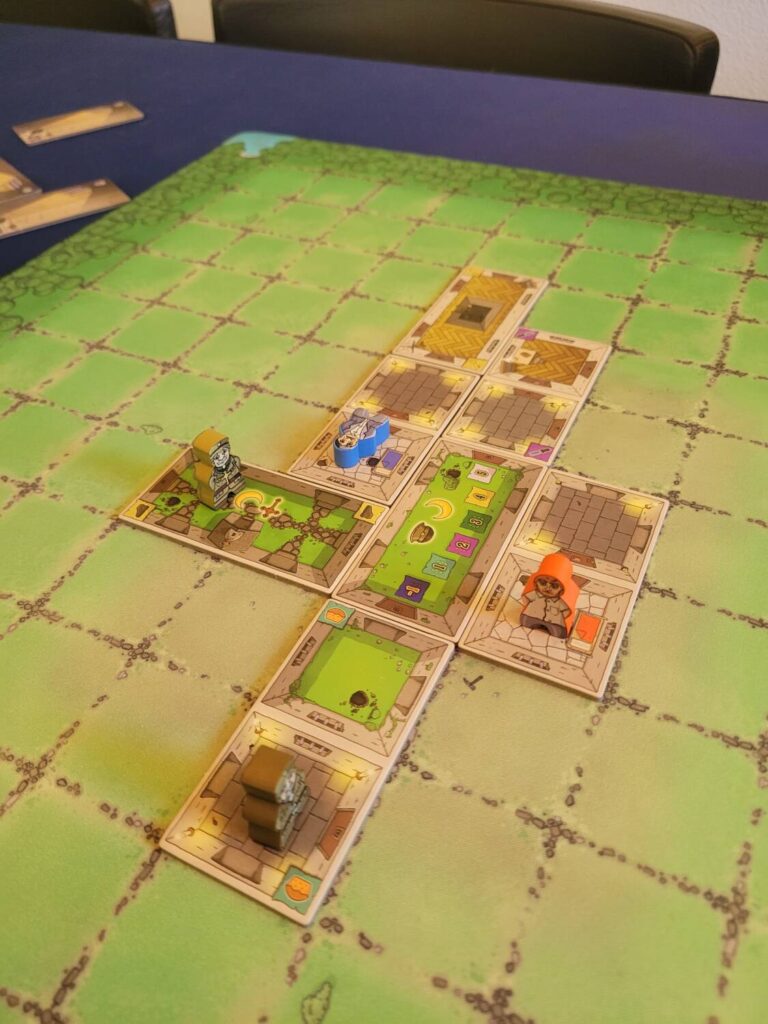
I’ve played Feudum a lot, it has many compelling ideas. Mark Swanson seems to be a guy who is creating games that are very ambitious in scope. Feudum presents you with a player-driven economy with a fascinating push-pull mechanism between various player-run guilds wrapped around a difficult grind-out-your points system that’s essentially fulfilling contracts. Fled, by the same tack, is extremely ambitious. It’s a tile laying game where the tiles become the board AND are used to move your pawn on that board AND you use to make into resources/points AND use those resources/points to make more points AND potentially use those tiles to trigger the end of the game.
Like Feudum, I don’t think it works and, like Feudum, turns players into non-players while they’re playing the game. I’m not sure why this is the case with both games, but I think it either has something to do with Swanson’s development process or that he doesn’t quite know how to put incentives into his games.
What are you doing with that tile?
In Fled, you’re an Irish prisoner in a British jail. Thematically, while the game does a pretty undercooked job representing the oppression of the Irish as a people by the British (read one of a million books about it), it does a good job capturing how much tedium and cruelty there is in prisons. That said, you’re not going to find a hidden argument for prison abolition here. It’s pretty straightforward—prison bad, you wanna escape.
You’re also, in addition to being a prisoner, a prison architect. On your turn, you must add a tile to what is effectively a 11×12 grid. You can cover five squares in either direction from the rectangular start tile, the 6th square in an orthogonal direction must always be a specific forest room. The tile is a domino-style tile, which sometimes contains 1 room (2 squares) or 2 rooms (2 squares as well, but different terrains). There are numerous conditions for laying a tile. If you have a tile with a gold symbol, you must lay it if you can. One of the rooms must match one orthogonally adjacent room, and all the entrances and exits must follow the rules; doors to doors, windows to windows, either one to archways. The aforementioned forest “room” must occupy the 6th “room” square counted from the start tile.
After you lay your tiles, you must take two actions, where you spend your tiles as currency, though the currency goes to different places. You can spend the purple (or gold) tiles with file, boot, key, and spoon to move your pawn one room through windows, archways, doors, and underground through holes up to 3 spaces away respectively.
Next to the tiled area, there’s a governor tile with different rooms that feature little icons of combs, stamps, cakes, and buttons next to the rooms. When your pawn is on a room, you can play a tile with the matching icon to your inventory. So, if you’re in the bunks, you can add a stamp tile from your hand to your inventory, for example. Stuff in your inventory is worth points when the game ends.
Additionally, it is tied to another action, where it can be traded for items that are of higher point value and/or can be used to escape. When your pawn is in a warden’s office room or in the same room as the chaplain pawn, you can trade the items from your inventory for the purple tiles in your hand, which then become inventory items themselves.
Finally, as an action, you can dump a tile into a face up supply that all players can access. At the end of your turn you can take one tile from the face up supply, drawing the rest blind to fill your hand back up to 5.
If it sounds dense, it’s because it is. Everything in the game contains a metric ton of information. There are also wild shamrock tiles, the gold tiles are considered to be two icons of their type, and there are purple whistle tiles, that let you run warden pawns around the board, causing other players to lose a tile for the next turn (and take a negative point at the end of the game if the “shackle” tile isn’t removed), and if they’re caught twice, get sent back to their room or thrown into solitary confinement, which results in the loss of an entire turn.

When you get next to one of the forest tiles, and you have the right amount of purple tile in your inventory, you can escape as a free action, discarding the tiles and gaining 5 points, the highest amount you can get. Every player gets one more turn, and then players sum up the points in their tiny prison tableau to see if they win. You can not escape and win based on having a stacked inventory (see reference below).
You can stop now if this sounds good to you.
Too much weight on them there tiles
There are a number of obvious issues with the game’s design, but I won’t go with the most glaring. The main issue to me is that through no fault of their own, a player might be completely out of the game based on a single “bad” decision, but it is next to impossible to tell what a bad decision is due to the very bizarre probability logic that drives the system.
This ain’t Race for the Galaxy, where there’s 90+ cards and each of them are duplicated maybe 2-3 times in the deck. Each time you play a tile to the map, you are removing a resource for the game, one of only 57. Here’s a little breakdown:
- 6 each of file, boot, spoon, key
- 5 whistles
- 6 stamps
- 4 each of combs, cakes, and buttons
- 10 shamrocks
So, as the last player in a four player game, 3 of these symbols will now be removed from the game before you take your first turn. I’m not a math guy, but that’s a significant alteration to the probability of the draw and the initial distribution of hands.
But Thomas, you say, the point of games is to have fun, just enjoy it. I don’t mind a good ol’ luck fest, but to play this game is akin to the Pax series, where most of a turn is discovering all the things you cannot do. Many times, a player’s entire turn will be just discarding tiles.
Every tile in this game contains enormous amounts of information, but most of that information is restricting your creativity, rather than enabling it. It’s quite the feat from an information design perspective, because the game conveys a lot with simple iconography (s/o to my boy Klemens Franz, the best to ever do it). Unfortunately, information design and clever stacking of game mechanics do not a great game make.
Flee!
I’m a game designer too, as much as a basement dwelling crank like me can be, and I think about most game things from a design perspective. I really admire Swanson’s attempts to make novel systems that provide interesting decision spaces, but Fled is a twinkie–interesting form, nothing but air-flavored cream inside.
If I had to pinpoint a primary critique, it’d be this, and many designers (and gamers) make this mistake. There is no such thing in a contest where we play to win as “playing for second.” If the social contract we build together when we play a game is “we’re all playing to win,” “I’m going to play for second place” destroys the incentive structures that “playing to win” demands. Fled forces you, often from your second turn, to play for second, and this results in players just doing things, poking at the game with sticks with no hope of changing the result.
If you think that playing to win limits the possible horizons of what games can do, I will point out that there are gazillions of ways to define “winning” and “victory” and many of them can be dramatic, surprising, and revealing. But, designing a game where you immediately place players in a position where they should not care about what is happening is something you should run away from.


